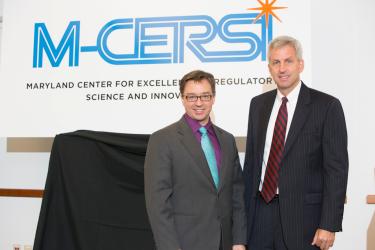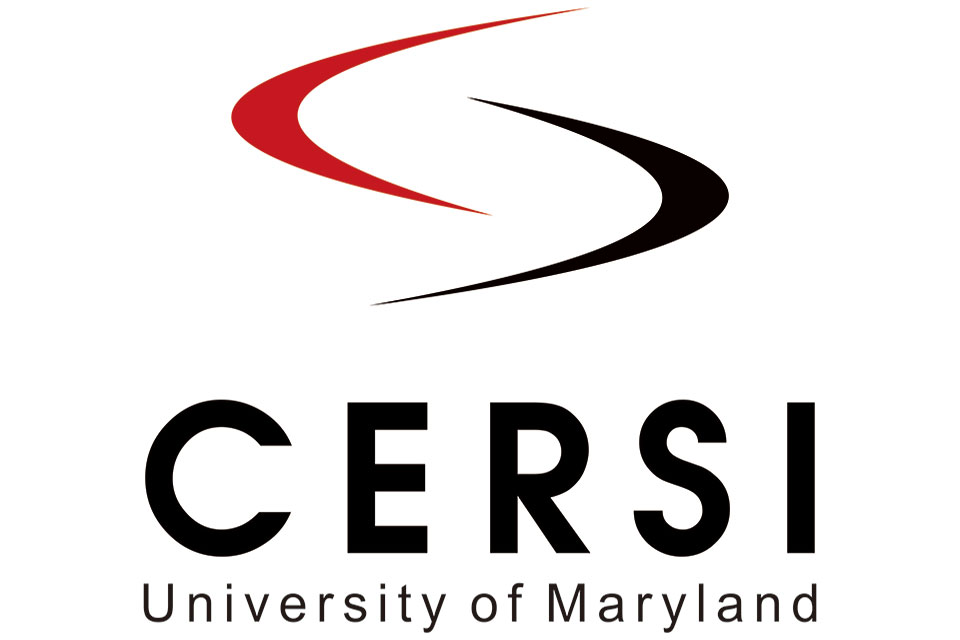Industry, FDA Call for Strides in Regulatory Science at UM Center Launch
Center of Excellence in Regulatory Science and Innovation taps researchers at Baltimore and College Park campuses, Food and Drug Administration, and industry to make a difference.

By Steve Berberich
September 14, 2012
More progress is needed in science to improve regulating drugs and medical devices by the Food and Drug Administration (FDA), according to a diverse group of speakers at the first conference of the University of Maryland’s new Center of Excellence in Regulatory Science and Innovation (CERSI), on Sept. 5.
Jessie Goodman, MD, MPH, chief scientist at FDA, was among those calling for stepped up scientific innovation. “Modernizing the science of how products are developed and evaluated is a complex challenge requiring teamwork. That’s why we need your help. This is not something we can do just from our (FDA) offices,” he said to an audience of about 150 scientists, educators, and administrators.
The event was made possible by support from the FDA and additional support from CERSI Industrial Consortia member organizations, including AdvaMed, Becton Dickinson, Lockheed Martin, MDMA, SAIC, Siemens, and Weinberg Medical Physics, LLC.
The idea of CERSI is to jumpstart “a new dawn” in regulatory sciences, said Jack Cook, PhD, vice president for clinical pharmacology/senior director at Pfizer, Inc. in Groton, Conn. In October 2011, the FDA awarded $2 million to launch CERSI programs at the University of Maryland (UM) and Georgetown University. The investment is part of the FDA’s effort to foster a robust, collaborative, regulatory science culture that enables FDA to address the scientific challenges presented by revolutions in medical product development and to improve food safety and quality, according to the agency’s website.
The intellectual origins of CERSI, said Goodman, are sophisticated modern sciences, including rapidly emerging areas like genomics, tissue engineering, bioinformatics, and other technologies that can be integrated into the testing and evaluation used to develop and regulate new products to better protect and promote health.
Cook said the FDA’s current regulatory process will not solve the problem of ever increasing multidrug resistance among infectious bacteria, coupled with a steady decline since 1983 in laboratories developing and manufacturing new drugs to fight them due to high costs.
Regulatory adjustments are also needed to meet “challenges in developing (medical) devices,” said Rob Conley, MD, regulatory leader for biomedicines at Eli Lilly & Co. of Indianapolis and an adjunct professor at the UM School of Medicine in Baltimore. “I wanted to meet with you all because (CERSI) sounds like a great idea,” Conley said, adding that product development interaction with the FDA is still very uneven. “As a manufacturer, how do we tackle the inefficiencies?” he asked. “And as a physician, I want to move our patients past oral ingestion and injections but more sophisticated devices are not very advanced at this time.”
CERSI includes faculty from the UM’s Baltimore and College Park campuses. James Polli, PhD, co-principal investigator and professor at the UM School of Pharmacy in Baltimore, announced new training and work exchange programs for both university and FDA scientists. “We’ve had great progress in our first year,” said Polli.
Co-principal investigator William Bentley, PhD, MS, professor of engineering and chair of the Fischell Department of Bioengineering in College Park, announced that so far seven companies have joined a new CERSI Industrial Consortia program. “This is a partnership to enlighten industry on how the FDA works and to enlighten the FDA on what industry expects. It also brings all partners together to guide the center’s research agenda,” said Bentley, adding that the CERSI conference was the first of many to come.
Also speaking at the conference was Steve Castellino, PhD, director of drug metabolism and pharmacokinetics at GlaxoSmithKline of Research Triangle Park, NC, who suggested a new medical imaging technology for drug development scientists and regulators. He proposed a MALDI-imaging system that combines the use of biological and chemical imagery that can reveal the effects of a drug on tissue and offer a distribution of where in the tissue a drug is doing the job for which it is designed: to affect a medical condition. And, James McElvain, PhD, senior director of the Analytical and QC Department at Kythera Biopharmaceuticals, Inc. of Calabasas, Calif., spoke about the need for FDA guidance on good manufacturing practices during early clinical research. He said companies sometimes adopt excessively high standards, making early research too expensive and slow.
To pave the road to a new regulatory paradigm, CERSI will fund four 10-month Innovation Awards of $50,000 each to faculty to research improving pre-clinical assessments of safety and efficiency, ensuring readiness to evaluate better technologies, and harnessing data to improve health outcomes.
CERSI is also funding “America’s Got Regulatory Science Talent,” a new competition for students at the UM Baltimore and College Park campuses. The aim is to promote student interest in the sciences of developing new tools, standards, and approaches to assess the safety, efficacy, quality, and performance of FDA-regulated products.


